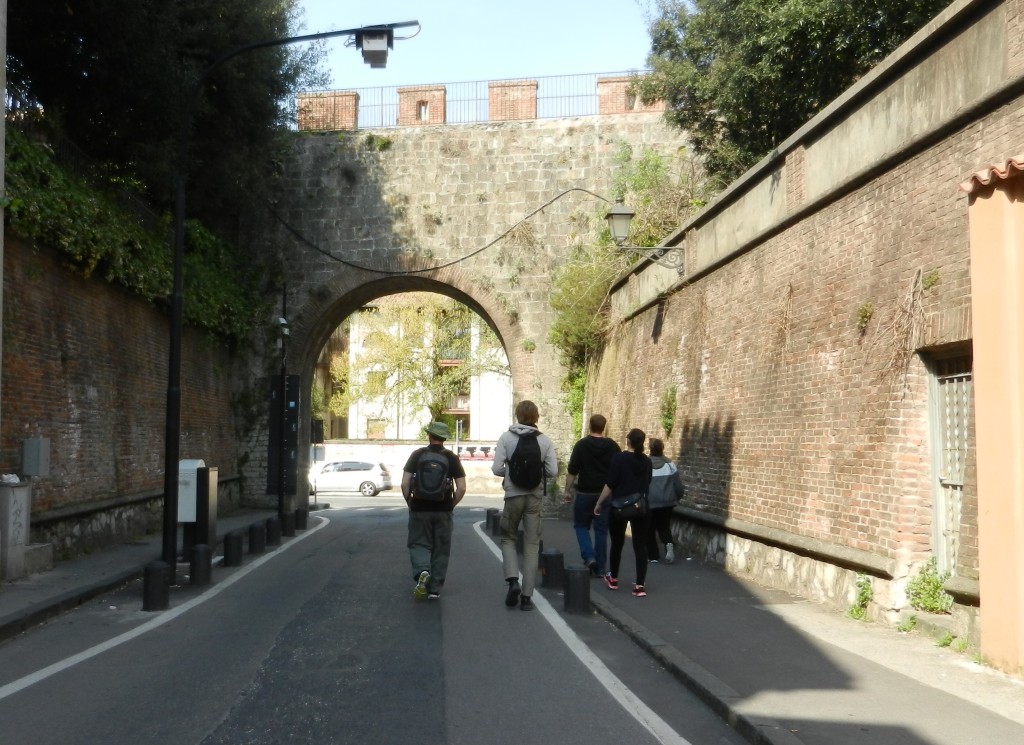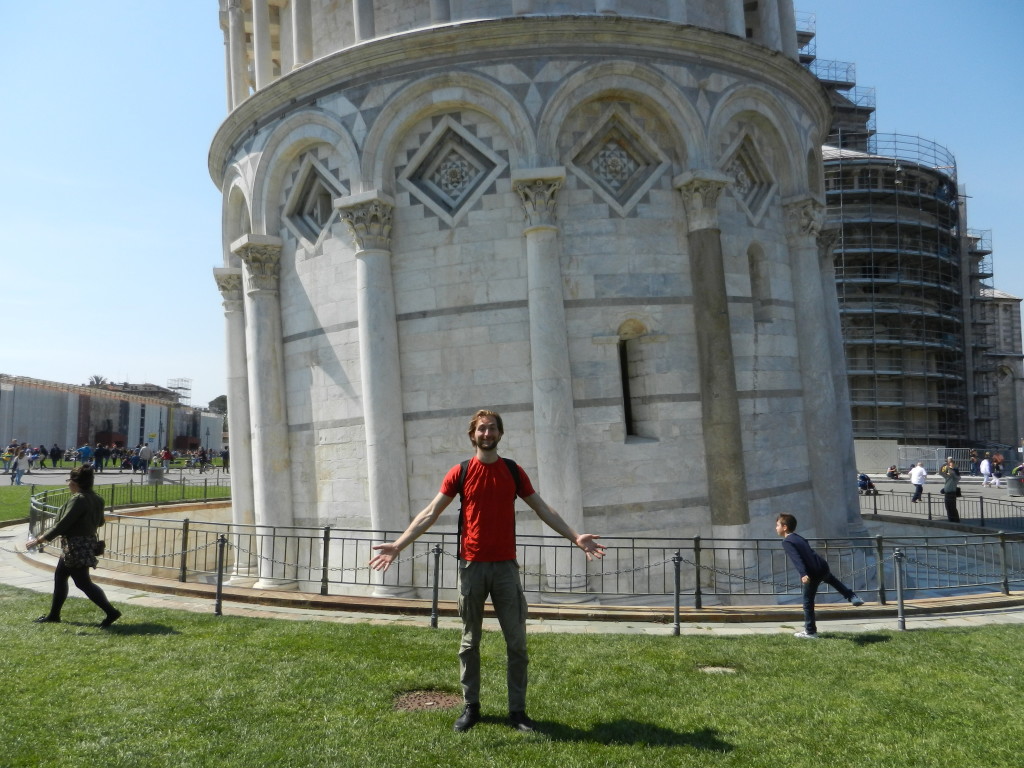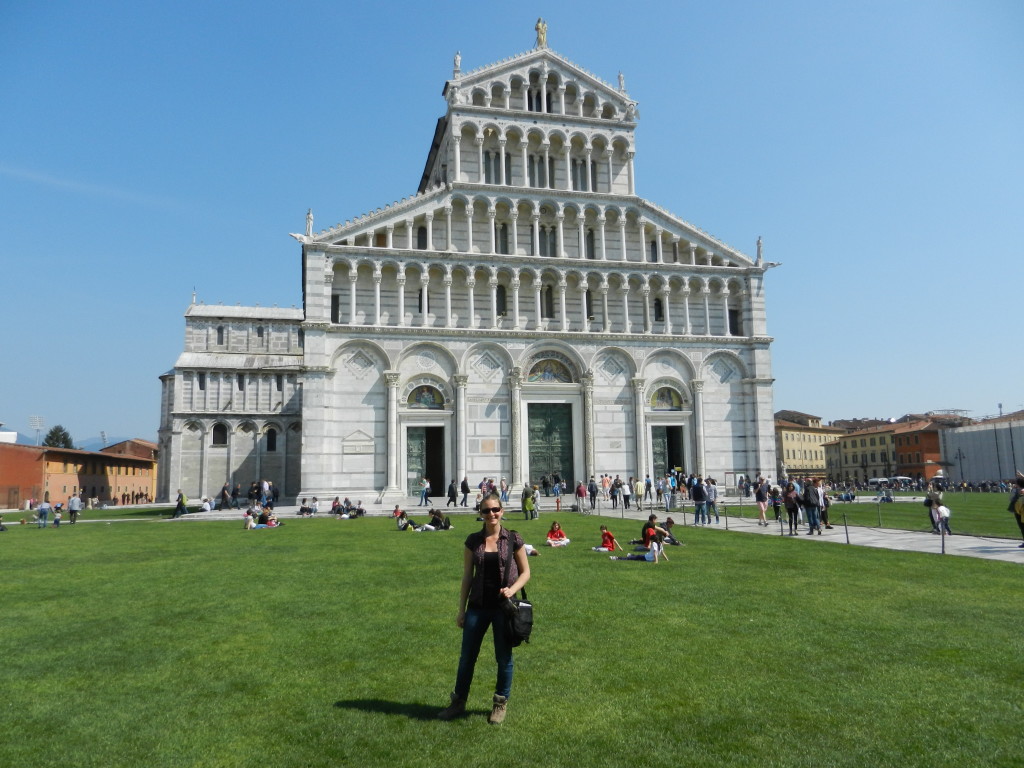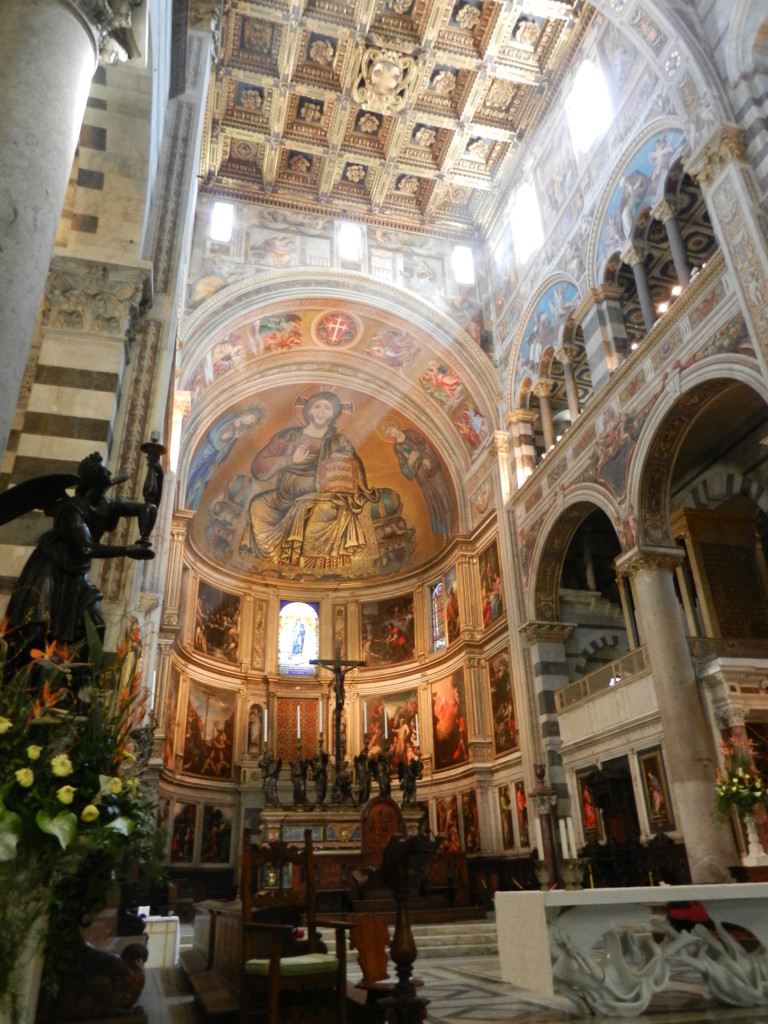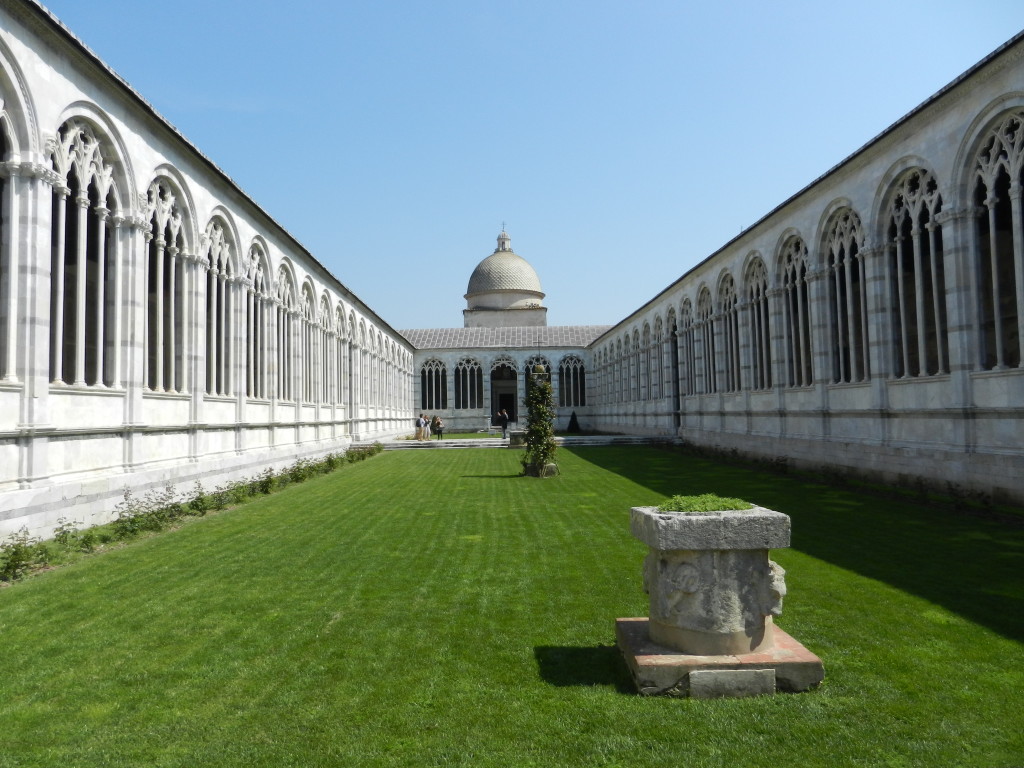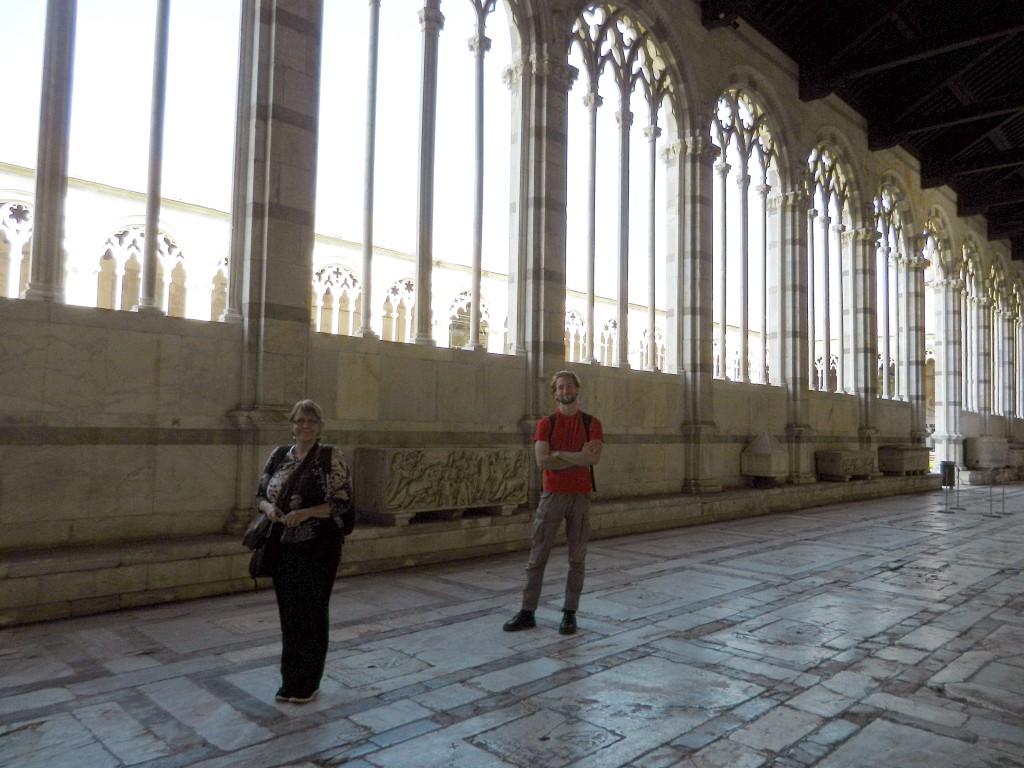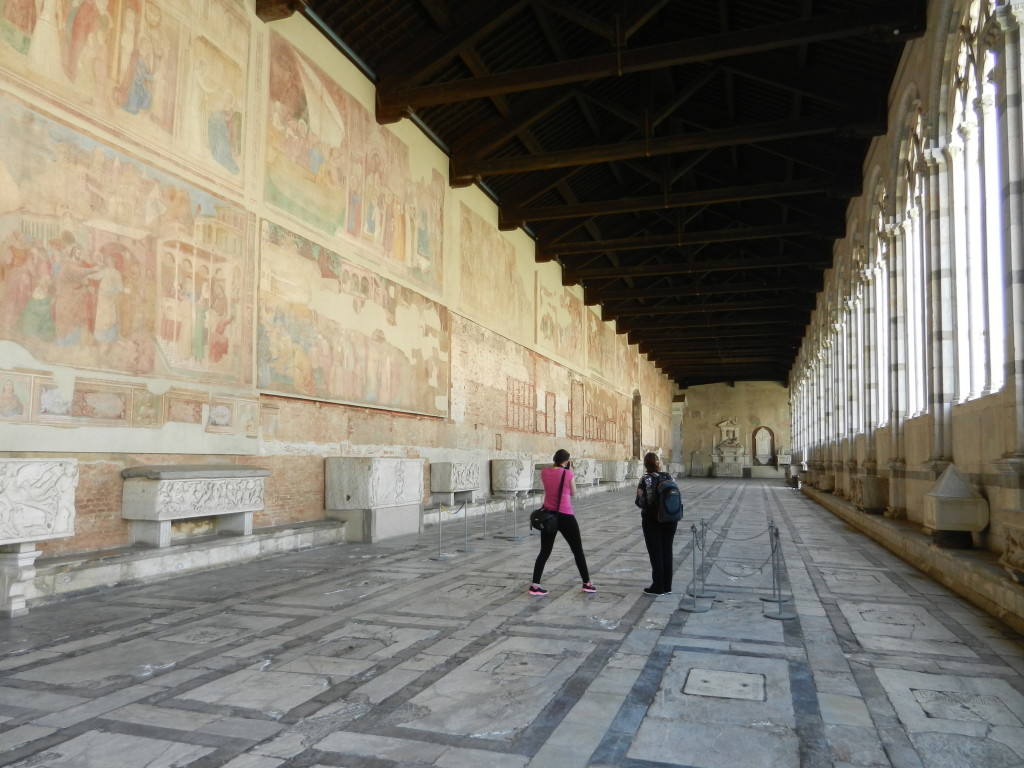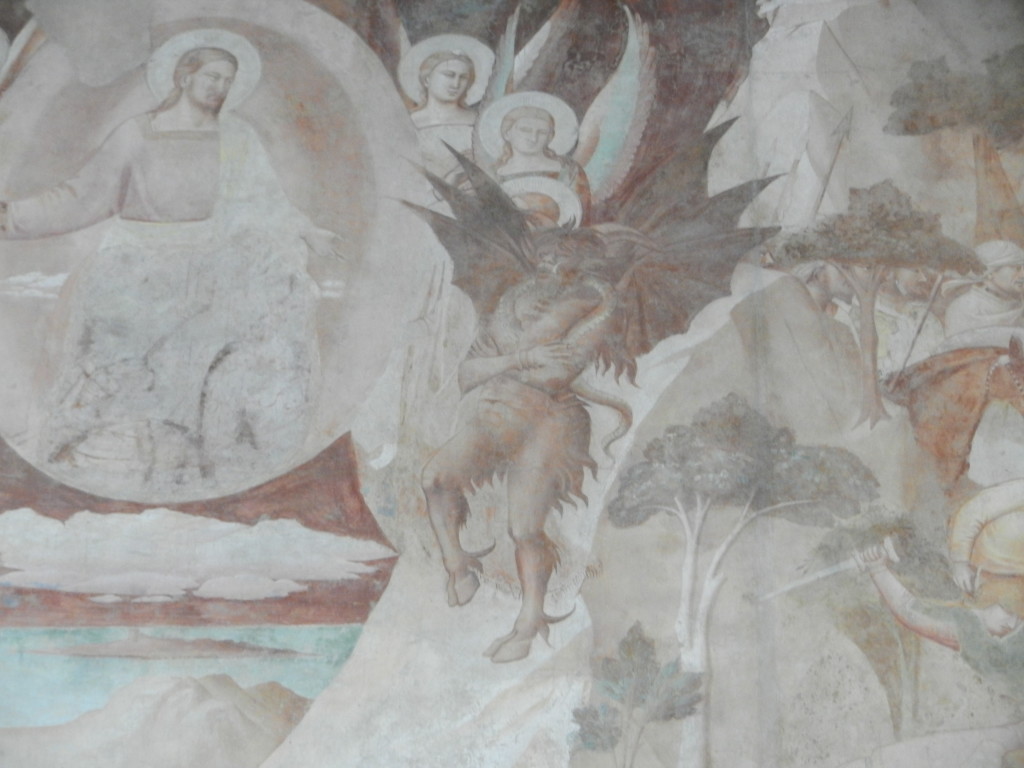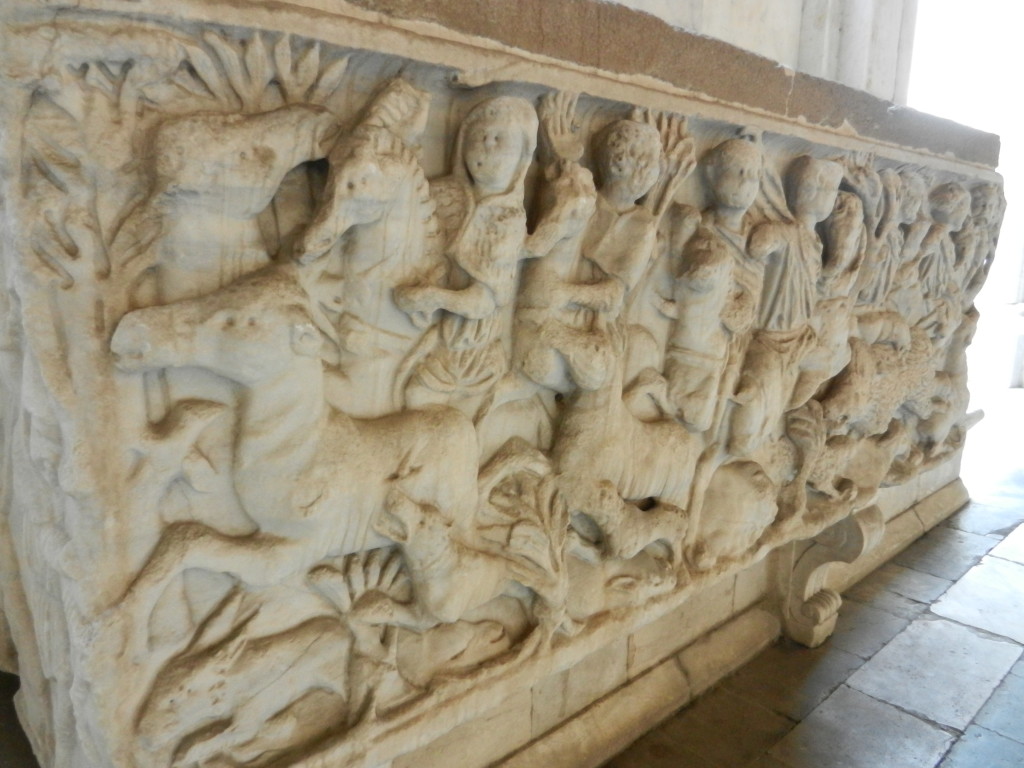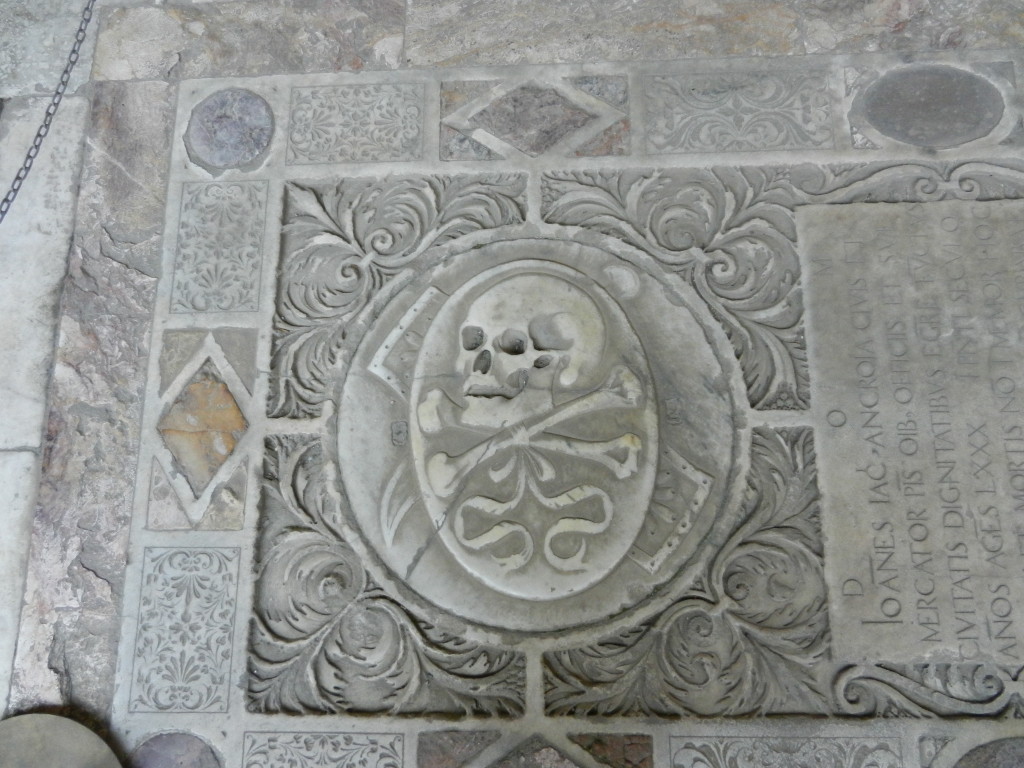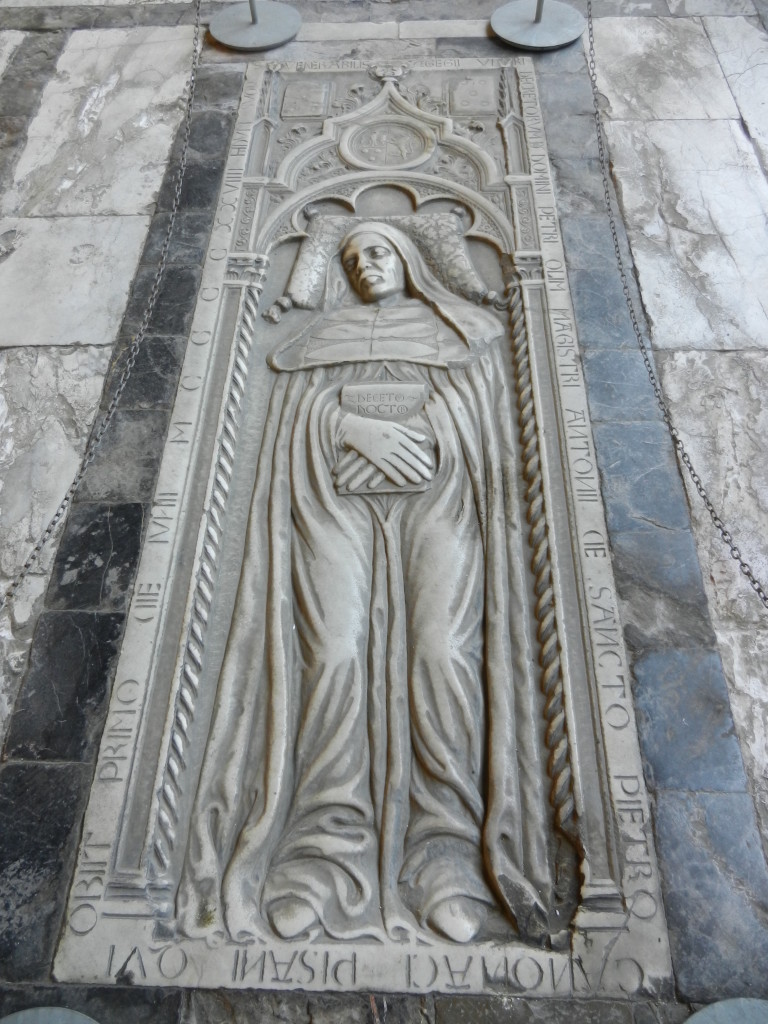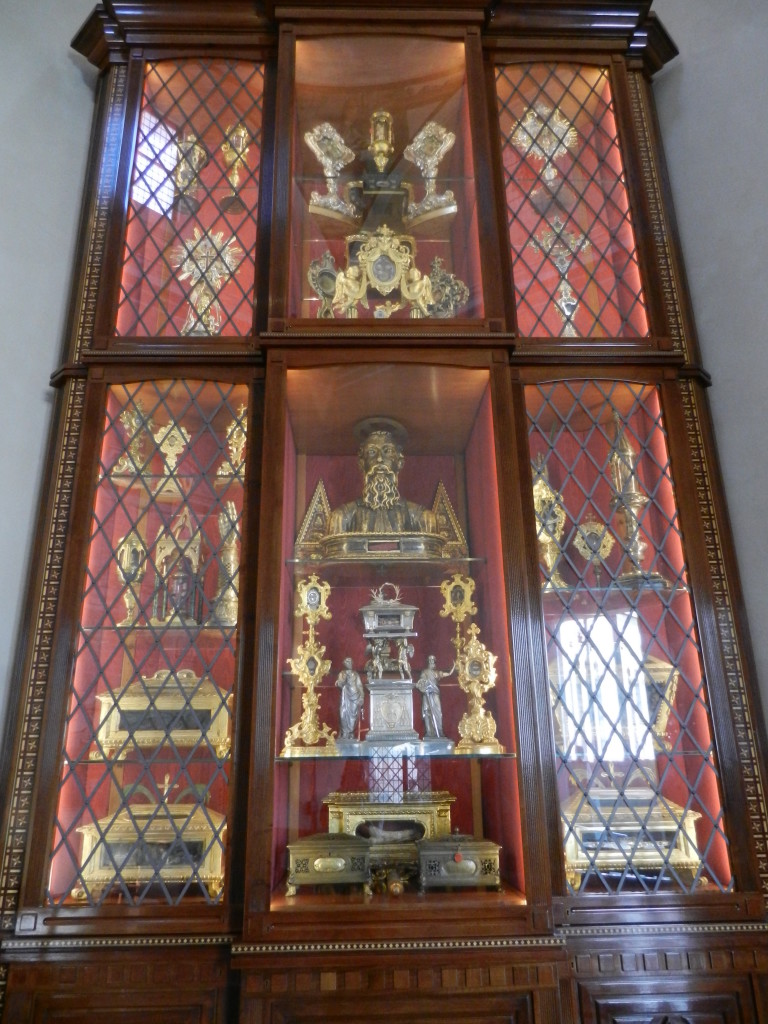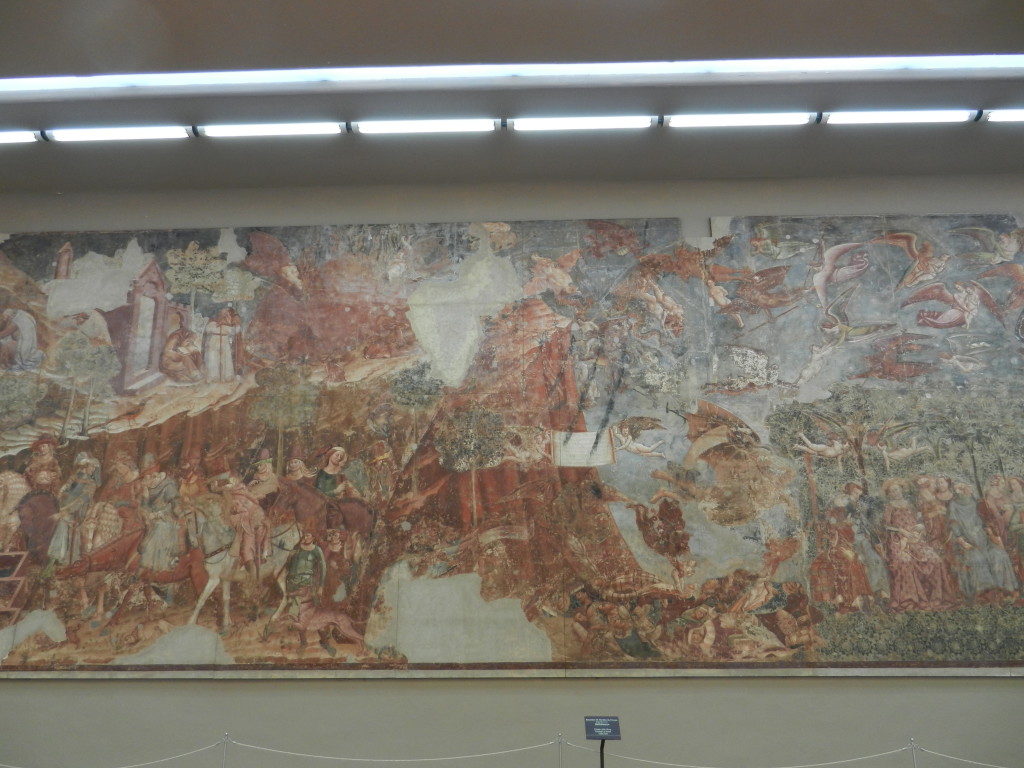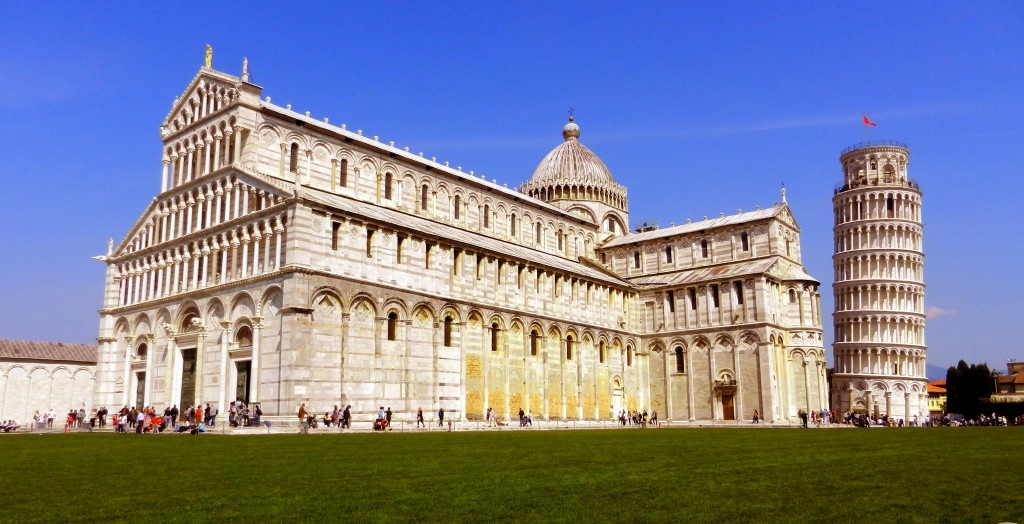
Italy’s infamous Leaning Tower of Pisa attracts over a million tourists a year, so we thought it was time to join the flock and see what all the fuss is about. Embarking with a caravan full of Ashleigh’s family we left the gorgeous shores of Tuscany and proceeded inland to the province of Pisa and its capital city. With Fred behind the wheel of our monstrous bus-van, Braeden navigating and the rest of us back-seat driving, we carefully piloted through Italy’s narrow streets, avoiding reckless Lamborghinis along the way.
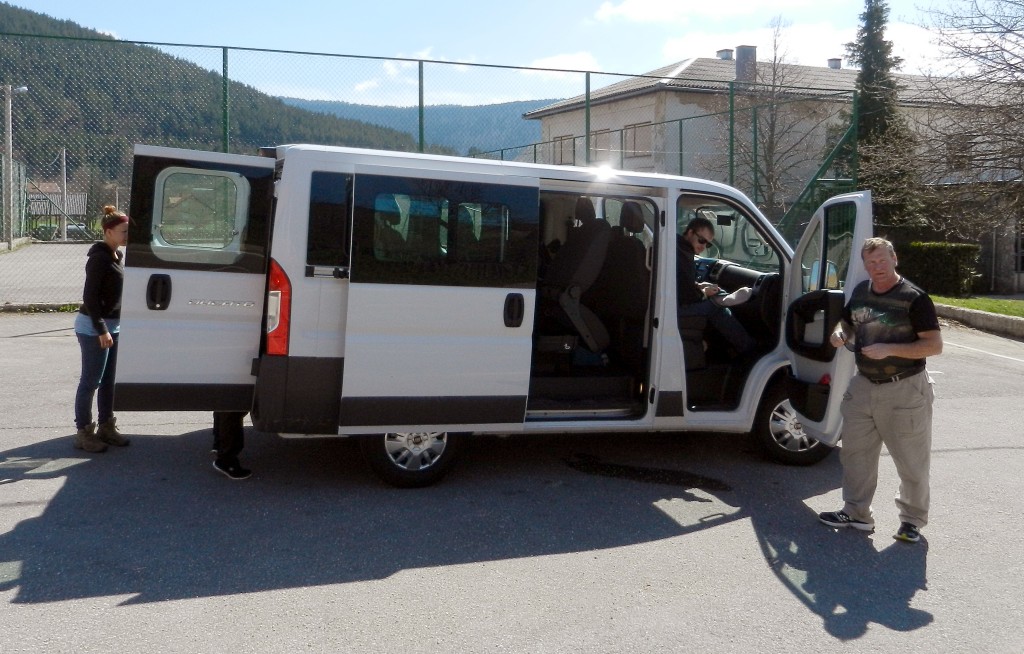
Like most tourists we went straight to the main attraction within Pisa: the astounding Piazza dei Miracoli. Avoiding predatory bracelet sellers lurking at the entryways, we entered this enormous, grassy square to witness not only the Leaning Tower but a majestic cathedral, baptistery, and cemetery. This UNESCO Heritage Site is named the “Field of Miracles”, not because its a miracle that the tower of Pisa is still standing, but because of the architectural wonders collected within its walls.
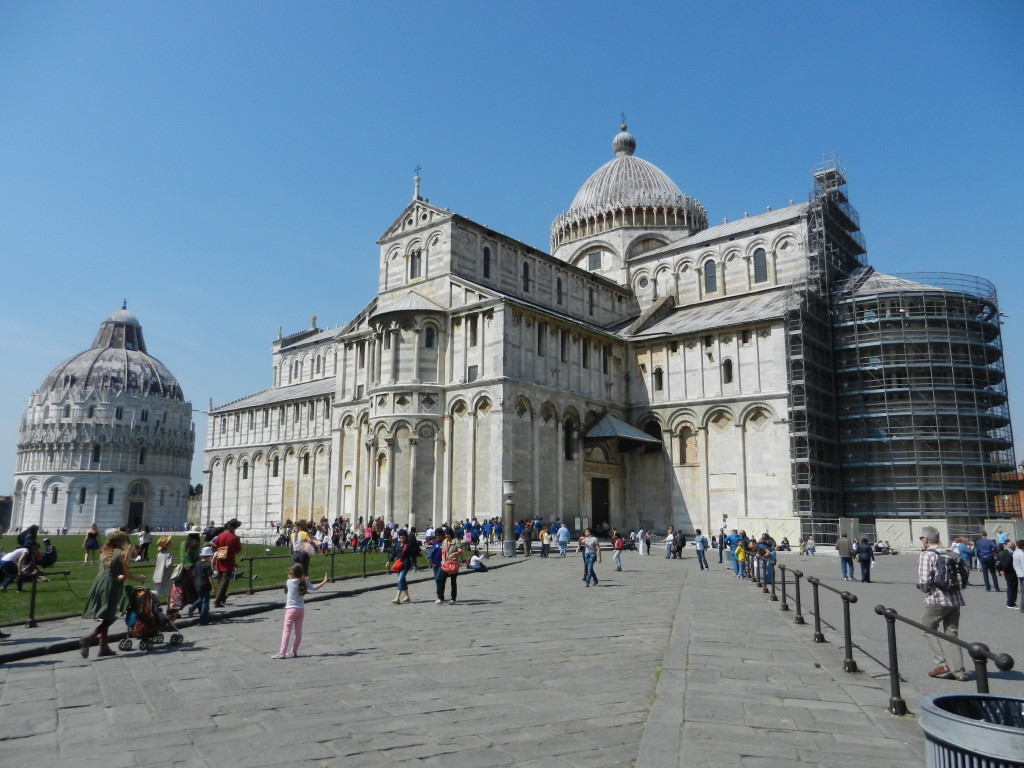
Though the Leaning Tower of Pisa is one of Italy’s most famous attractions, I never really understood why until I was standing in its shadow. It is remarkable to witness this 56 metre-high, twisted column leaning towards you, ready to drop and crush you at the mere breath of an ant. I can tell you now that pictures of the Tower of Pisa don’t do it justice (yes, even the clever photos of people drop-kicking it). Of course, serious restoration work has been preformed on the tower to correct some of the lean and stabilize this monumental mistake, but its easy to imagine even a small earthquake could send Pisa’s beloved belfry to the ground.
Was this architectural anomaly of Pisa built to tilt on purpose? Presumably it wasn’t MEANT to lean dangerously, but while it was being constructed in 1178 it began to sink into the soft, silty earth which had proved disastrous for building conditions. Only having completed the second floor, construction was halted and Pisa’s bell tower was left to sink for 100 years. After that time, construction resumed and the Leaning Tower of Pisa was officially completed in 1370, but you can notice how the tower curves back as the builders attempted to correct its lean. Over the centuries there have been many attempts to preserve Pisa’s leaning tower, everything from extracting tons of soil from one side to installing counterweights. In 2008 the engineers working on Pisa declared that, after 830 years of falling over, the building was finally stabilized. If it wasn’t for this great blunder of Italian engineering, the Leaning Tower of Pisa wouldn’t be the massive tourist attraction it is today!
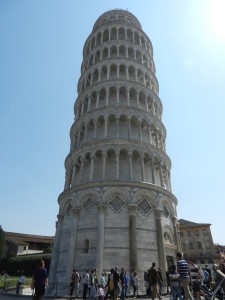
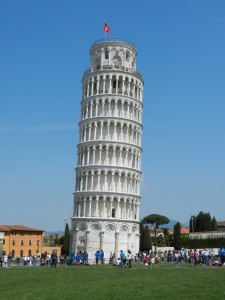
Everything has its price, so if you want to climb the Leaning Tower of Pisa you’re going to have to wait in queue for a while and spend 15 euros for the experience. There are several ticket options available, including a combination ticket if you wish to enter all the monuments in Piazza dei Miracoli, but to climb the bell tower is by far the most expensive.
To enter the cathedral is actually free, last time we checked, which makes it all the more enjoyable. I would say that Italy is the country with the grandest and most beautiful cathedrals in the world, and the Pisa Duomo lived up to its reputation. Intricate chandeliers, coloured marbles, celestial murals and looming archways together created the Duomo’s truly divine interior. The wonderful, marble façade of this massive church is detailed with Romanesque features and an impressive four rows of open arcades above the main entrance.
Just on the other side of the cathedral from the bell tower is the Baptistry of St. John. Though I never actually entered this great, domed building, I still enjoyed its marvellous exterior. This unusual, round building is actually the largest Baptistry in Italy and stands even taller than the Tower of Pisa. Decorated elegantly with classical columns, statues and intricate detailing, I would say St. John’s Baptistry is the most exquisite of all the buildings in The Field of Miracles. Pictures of the Baptistry’s interior looked rather plain so I opted to save my money for the entrance fee to Pisa’s Monumental Cemetery.
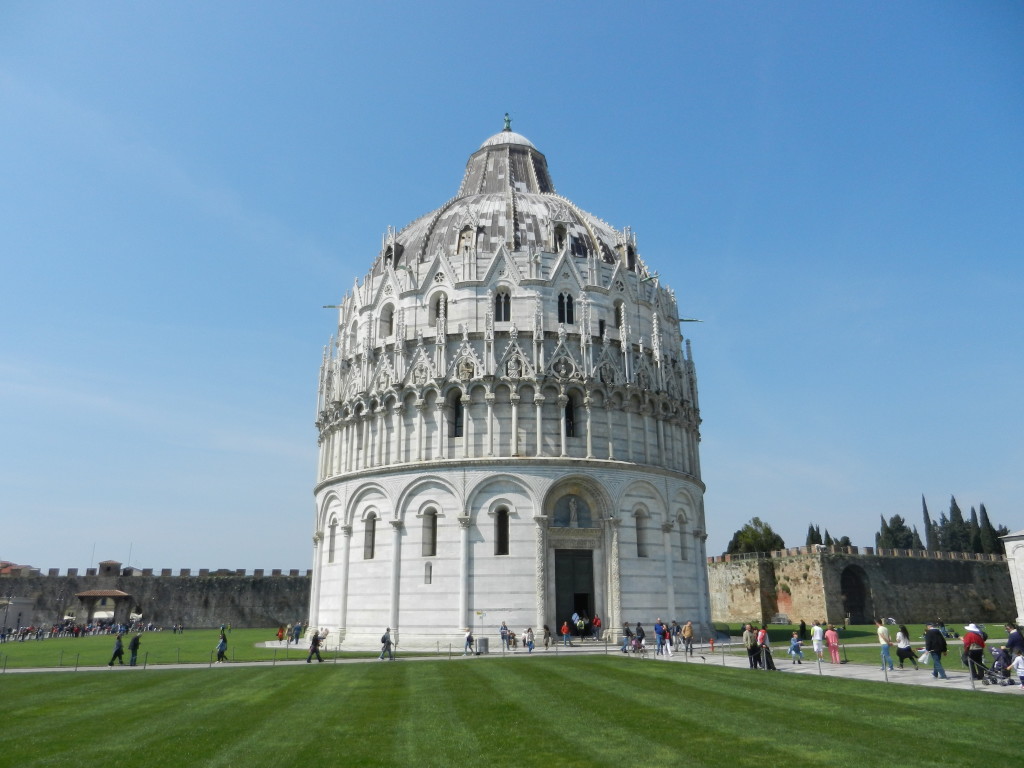
The Camposanto Monumentale is a mighty, walled graveyard on the north edge of the square and may be one of the most beautiful cemeteries in the world. It is said that the Camposanto was built on top of a shipload of sacred soil from Golgotha, the hill where Jesus Christ was crucified, brought back from the Fourth Crusade. It is also said that the magical properties of this holy soil can completely rot a corpse in just 24 hours. How efficient! The inside of the Camposanto Monumentale is absolutely fascinating and well worth the 5 euro entrance fee. Among the tombs of the dead, many Roman sarcophagi and sculptures lie within the cemetery grounds. Intriguing, medieval frescoes are painted on the walls depicting stories from the The Old Testament, The Last Judgement and Hell. The Monumental Cemetery holds a large collection of holy relics (dead saint parts, everybody!) including pieces of the cross on which Jesus was crucified, eleven of the twelve apostles, a piece of the Virgin Mary’s dress, and a thorn from the Jesus’ crown of thorns. How believable are these relics is up to you to decide, but you can’t prove it either way, can you?
On your trip to Pisa’s Piazza dei Miracoli, instead of buying a combination ticket to enter all the monuments, I would recommend visiting the cathedral for free and just spending 5 euros to enter the Monumental Cemetery. If you have the money and the time you can pay for it all, why not, but do you really need to climb the tower? What if your extra weight is enough to finish off what started 837 years ago and the Leaning Tower of Pisa comes tumbling down? Is it worth the RISK!? And right after you paid 15 euros to climb 296 steps too. Why not pretend to give Pisa’s infamous bell tower a drop-kick and then lie in the grass, soak in the sunshine, and gaze upon all the other marvels of the Field of Miracles.
